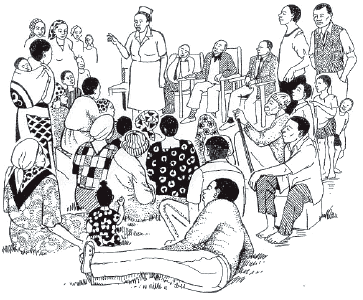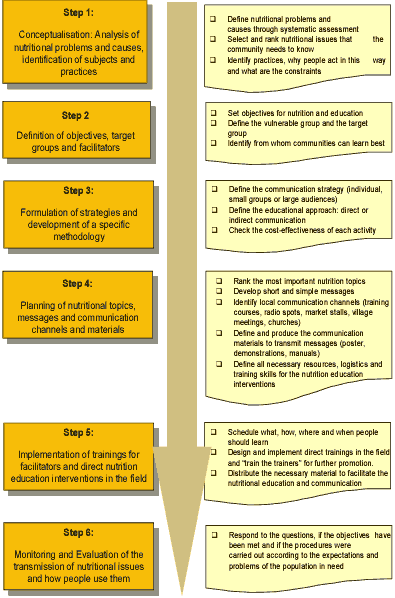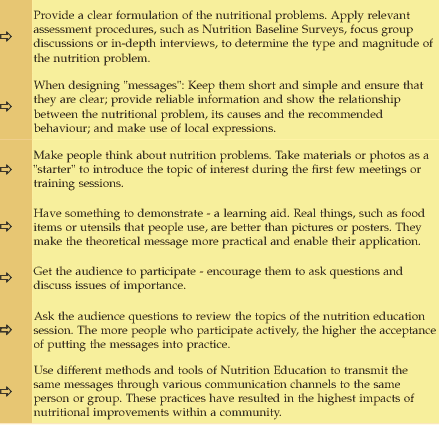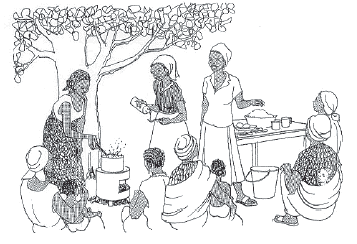Nutrition Education - Principles and General Procedures
|
|
Characteristics and the logic of planning Nutrition Education activities:Nutrition Education is not an end in itself. Nutrition Education interventions should be part of an integrated programme aimed at linking nutritional messages with other programmes and services. Community participation, in the attempt to resolve nutritional problems, is recognized as the key approach to design interventions by development planners and nutritionists. Systematic community participation can be achieved by involving:
These representatives are important facilitators for the modification of socio-cultural beliefs to change nutritional behaviour. Furthermore, different representatives of the local institutions should be involved. Integrating teachers, agriculturists or health workers to transmit nutritional messages can be crucial for long-term behavioural changes and assure the collaboration between sectors. Figure 2: Talking at a public meeting
Source: Source: King, F.S.; Burgess, A.: Nutrition in Developing Countries. Oxford Univ. Press, 1996
Figure 3: The main steps for planning and implementing Nutrition Education activities
Table 1: General considerations for successful Nutrition Education
Figure 4: Doing food demonstrations with local women
Source: King, F.S.; Burgess, A.: Nutrition in Developing Countries. Oxford Univ. Press, 1996 |




